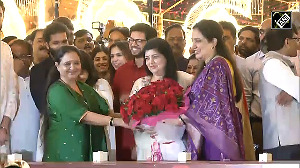Seven-times Tour de France winner Lance Armstrong was recovering from surgery on Wednesday after having a stainless steel plate and 12 screws inserted to stabilise his fractured right collarbone.
The 37-year-old American broke his collarbone in four places during the first stage of Spain's Vuelta Castilla y Leon on Monday and returned to the United States to have surgery in Austin, Texas.
Although Armstrong's broken collarbone was more serious than initially suspected and required a "challenging" operation, his surgeon said he was confident the rider would be able to resume light training after about a week.
"The goal of our surgery was to stabilise his fracture as quickly as possible but in a safe fashion, and then allow Lance to do the things he does best," Dr. Doug Elenz said in a teleconference call.
"This first week we are going to make Lance take it easy. We need his incision to heal without any kind of complication.
"Infection is always a concern for a surgeon and one way to decrease the chances of that is to ask Lance not to do a whole lot the first 72 hours and actually his first week.
LEG STRENGTH
"After his wound is on its way to healing, we're going to let Lance get on an indoor exercise bike and work on his aerobic fitness and his leg strength but we are probably not going to let him do a whole lot with his upper extremity.
"As the weeks progress, we're going to advance him off the exercise bike on to the street and take it day-by-day, week-by-week and month-by-month."
Elenz said Armstrong's fracture would take between eight and 12 weeks to heal completely.
"So we're going to have to push the envelope a little bit and let him do some things probably before it is officially healed," he added.
"We're going to have to allow him to train and even potentially ride with a fracture that is not 100 percent healed."
Armstrong, who returned to the sport this year after more than three years in retirement, is still hoping to make his first appearance in the Giro d'Italia in May before riding the Tour de France in July.
"In my opinion, I think that the Giro is still very do-able," the cancer survivor said in a teleconference call on Tuesday.
"Even if I went into the Giro under-prepared and was riding it as preparation for other events, I would still be excited to go and do that."







